
Where to find family-friendly fun in Bend, Oregon
April 17, 2024
6 minute readWrap yourself in a heavenly blanket of Oregon stars. Indulge in the spectacular majesty of a night sky aglow with the cosmic amazement of constellations and the silhouettes of dark pines and mountain peaks in the distance.
What makes Bend a stargazing destination? Because of our high elevation, loads of clear nights, and low light pollution, Central Oregon is home to vast, dark celestial skies that make it easy to gaze upon constellations, twinkling stars, and the periodic meteor shower.
In fact, Bend is the gateway to the largest dark sky sanctuary in the entire world. The Oregon Outback Dark Sky Sanctuary occupies 2.5 million acres of pristine high desert where starry skies are protected for humans and wildlife alike. The fringe of this wild and rural Lake County wonderland sits less than two hours from town, making Bend the perfect spot to start your starry exploration.
Closer to Bend, you’ll find two more dark sky areas at Prineville Reservoir State Park and Sunriver. We also have state-of-the-art observatories where you can peer through a telescope for a glimpse of globular clusters, galaxies, and our neighboring planets.
So grab a cozy blanket, binoculars, and curiosity, and let’s go explore the night sky!
For a fantastic stargazing experience in Central Oregon, gear and preparation are key. Here are some items to bring along:
Layers: Even in summer, nighttime temperatures can plummet, making warm layers—including a jacket, hat, and even a blanket—essential for comfort.
Red flashlight: A flashlight or headlamp with a red light helps you navigate safely while preserving your night vision.
Binoculars: Binoculars or a telescope can offer detailed glimpses of distant stars, planets, and other celestial wonders.
Star chart: To make sense of the skies above, bring a star chart or download a stargazing app.
If you’re itching to learn more about astronomy by gazing through a telescope and learning from experienced stargazing guides, then a trip to one of our three observatories is a must!
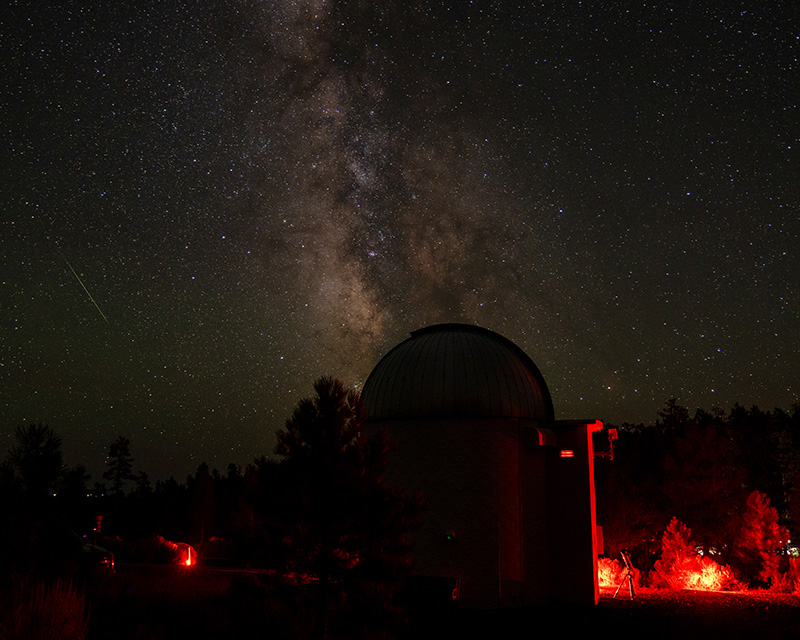
Pine Mountain Observatory, 34 miles southeast of Bend, offers unparalleled stargazing in the heart of the Deschutes National Forest. The observatory is operated by the University of Oregon and invites both casual stargazers and avid astronomers to explore the cosmos through a range of telescopes with the help of knowledgeable guides.
Public star parties and educational programs are offered after sunset, usually until 11 pm, throughout the summer months. Amateur astronomers are welcome to bring their own telescopes, but please arrive well before dusk to set up.
Dress warmly for the 6,300-foot elevation, and bring a small flashlight with a red shield to protect everyone’s night vision. Dogs are not allowed on the grounds when the observatory is open to the public. A $5.00 donation per person is kindly requested to support operations and outreach. For more information on events and hours, be sure to check their website.
A small, primitive National Forest campground is adjacent to the observatory and open on a first-come-first-served basis.
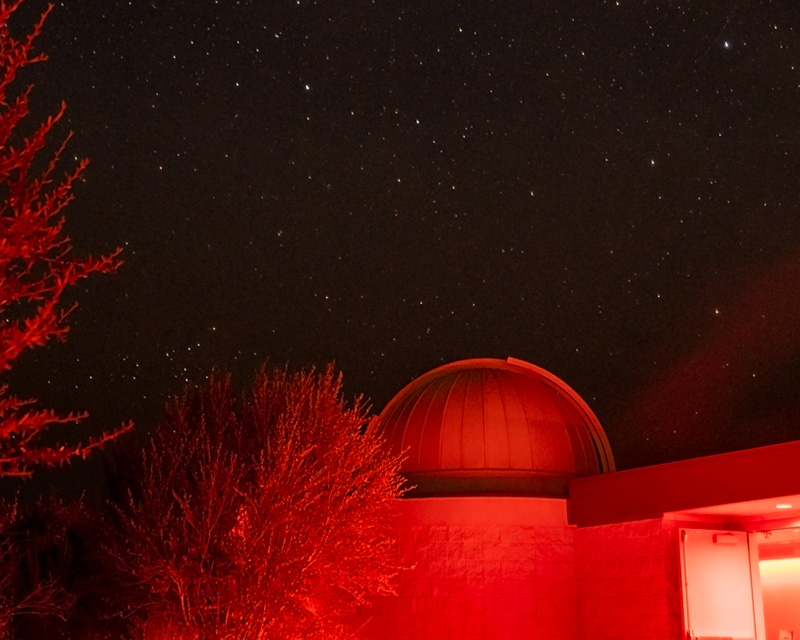
Sunriver Nature Center & Observatory offers awe-inspiring opportunities to stargaze the Central Oregon cosmos. Because of the elevation, dark skies, and clear air, it’s a perfect place to view the night sky. And it’s only 20 miles from Bend. Learn about our universe as you look through over a dozen telescopes pointed at various objects in the sky, like the moon, planets, star clusters, and nebulas.
From astronomers in the making to seasoned pros, the observatory’s knowledgeable staff, powerful telescopes, and stellar views will amaze and inspire. And be sure to top off your evening with a presentation and laser-guided constellation tour by an astronomer.
For a full-day adventure, the entire family will love explore botanical gardens, interact with local wildlife, and delve into hands-on science exhibits before discovering the starry skies. Hours, events, and exhibits may change depending on the season. Check their website for the most up-to-date information.
Worthy Brewing blends the passions of craft beer and celestial exploration with its unique Hopservatory. Located in a tower on the western flank of the eastside brew pub, this observatory offers stargazers the pleasure of enjoying dinner and beer before heading upstairs to gaze at the wonders of the Central Oregon night sky. The Hopservatory is equipped with advanced telescopes, allowing visitors to explore the vast cosmos, from distant galaxies to brilliant planets.
Depending on the time of year and visibility, regular star parties and events led by local astronomers make the experience both educational and captivating. Whether you’re an avid stargazer or simply a beer enthusiast with a curious spirit, the Hopservatory at Worthy Brewing promises a stellar evening under the stars.
Night sky viewing is open to everyone, first-come, first-served, with no reservations required. They kindly request a $5 donation per person to support their programs. Programs are weather-dependent. For more information, check out their website.
How about embarking on a celestial odyssey with Wanderlust Tours, a nationally acclaimed ecotourism company known for their deep respect and enthusiasm for nature? Their guided stargazing tours offer more than just a glimpse of the sky above. In both winter and summer, their experienced guides take you to secluded spots, away from the glare of city lights, to take in the majesty of the night sky.
Glide through the luminous mirror of an alpine lake with the silhouette of Mount Bachelor in the distance as each star, planet, and constellation comes alive with stories, both scientific and mythological, shared by these passionate guides. Choose from full-moon canoe tours, starlight snowshoe tours, and, when the timing is right, meteor shower tours. For more information, head to their website.
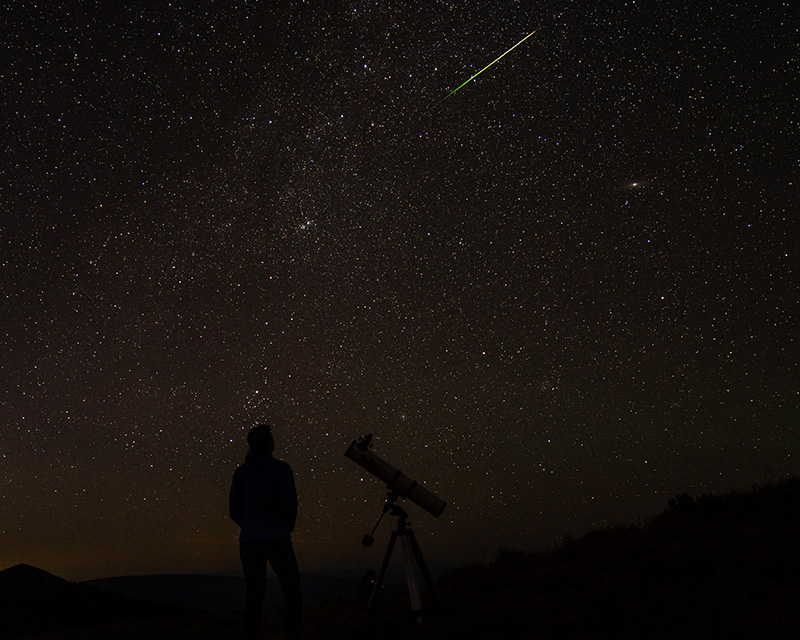
For those who prefer to plot their own astral adventures, the Cascade Lakes Highway offers several pull-outs and campgrounds with sweeping views of the night sky and majestic mountain silhouettes.
Venturing eastward into the high desert opens up another realm of possibilities, with vast expanses of land and minimal light pollution for clear views of the Milky Way, shooting stars, and distant galaxies. Places like Smith Rock State Park, the Oregon Badlands Wilderness, and the Alvord Desert all offer natural beauty by day and mesmerizing astral displays by night.
Another must-visit is Prineville Reservoir State Park. It’s Oregon’s first and only International Dark Sky Park, making it an ideal destination for stargazing. With its dark skies and wide-open spaces, it offers stunning views of the stars and planets.
On a clear night, you can see the Milky Way galaxy stretching across the sky. You can also spot planets like Jupiter, Saturn, and Mars, as well as constellations like Orion, Cassiopeia, and the Big Dipper.
The largest International Dark Sky Sanctuary in the world sits southeast of Bend in the vast rural wonderland commonly known as the Oregon Outback. At 2.5-million acres, roughly 90-percent of this protected stargazing paradise sits on public land, making it easily accessible for amateur stargazers.
What is a dark sky sanctuary? It’s a certification given by DarkSky International to land with exceptional quality of starry nights and a nocturnal environment that is protected for its scientific, natural, or educational value, and for its cultural heritage. To qualify, the area must meet strict criteria for sky quality and commit to protecting the night sky from light pollution through responsible lighting practices.
Planning to visit the Oregon Outback International Dark Sky Sanctuary from a Bend home base? It pays to be prepared. Much of this region is extremely remote, so plan carefully before driving an hour and a half to the Oregon Outback for stargazing. Pack food and water and plan for events like flat tires, long stretches between gas stations, and a lack of cell phone coverage. Watch for wild animals on roadways, especially when exploring at night. And most importantly, use Leave No Trace practices when exploring here or anywhere else in Oregon.
If you do choose to stay in Bend as your launchpad for exploring the Oregon Outback, prepare for stargazing like you’ve never seen before. On a clear night, you’ll see colors in the Milky Way that you never knew existed. Without light pollution impeding your view, you’ll enjoy unparalleled views of constellations, planets, and maybe a shooting star or two.
Many astronomers call autumn, winter, and spring “observing season” due to longer, clearer nights, vibrant views of constellations like Orion and Cassiopeia, and even the spectacular Quadrantids meteor shower that happens in January. But, of course, summer offers warmer temperatures and some amazing meteor showers, like the Perseids in August. The best time to stargaze is during the new moon when there is no moon in the sky, so its light doesn’t obscure the fainter stars and planets.
For information on astronomical charts, events, and outings in Central Oregon, the folks at Oregon Star Party, Central Oregon Astronomical Society, or Sky & Telescope are fantastic resources.
No matter when or where you choose to gaze, Central Oregon promises an unforgettable experience under the endless canopy of stars.

April 17, 2024
6 minute read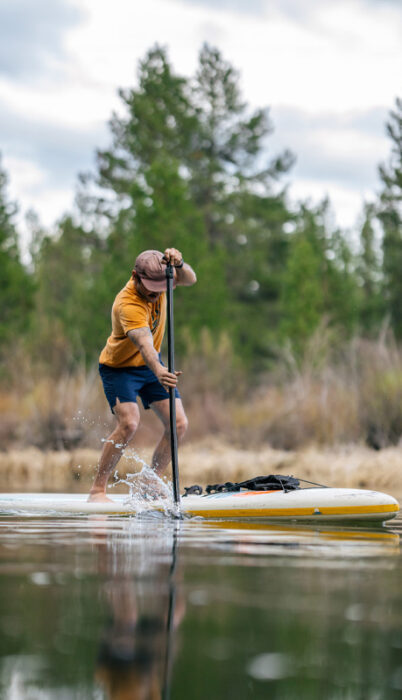
April 10, 2024
7 minute read
March 28, 2024
7 minute read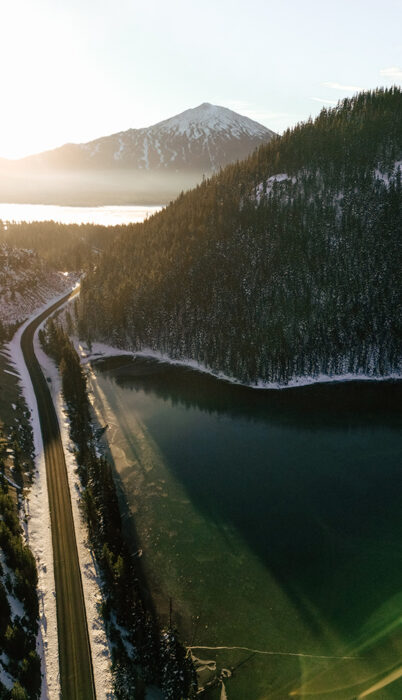
March 26, 2024
9 minute read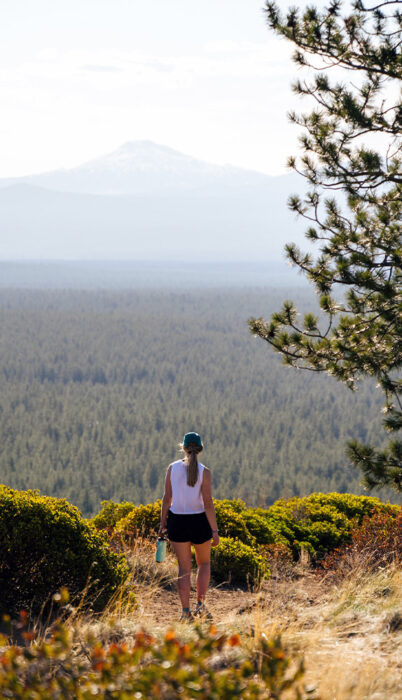
March 25, 2024
9 minute read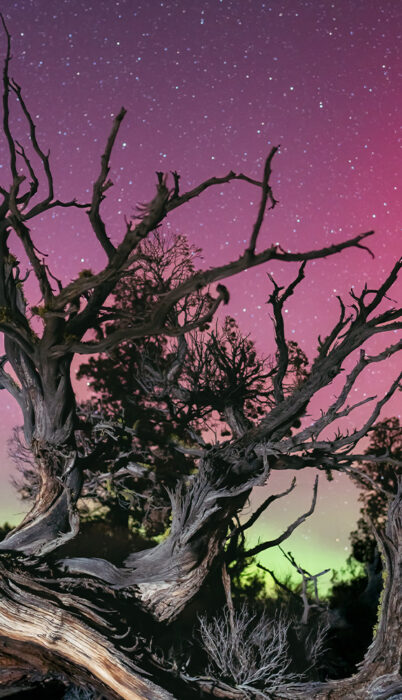
March 12, 2024
8 minute read